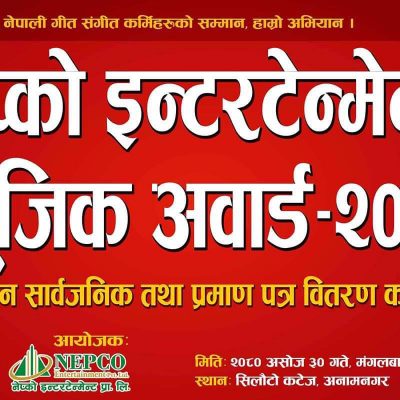Uniswap Bridge Interface V3 Vulnerability Analysis
Assess the security of the Uniswap Bridge Interface V3 immediately. Identifying potential vulnerabilities can mitigate risks associated with asset transfers. The analysis reveals multiple points of concern, including improper validation processes and susceptibility to certain attack vectors.
Enhance your security protocols by implementing robust validation mechanisms. Review the existing smart contract code for any overlooked weaknesses that could expose user funds. Swift action on identified issues helps in maintaining a trustworthy environment for users.
Regular audits play a pivotal role in identifying security gaps. Schedule thorough examinations of the bridge interface to uncover and address vulnerabilities proactively. Engaging third-party security experts can provide additional insights and recommendations tailored to your risk profile.
Educate your team about potential phishing attacks and social engineering exploits targeting users. Awareness training is as crucial as technical defenses, ensuring users remain vigilant against manipulation tactics. The combination of technical and human factors can significantly strengthen overall security.
Finally, ensure that all updates and patches are applied promptly. Keeping your systems up to date reduces the chances of exploitation. A commitment to ongoing security assessments instills confidence among users, contributing to the stability of the Uniswap ecosystem.
Identifying Key Vulnerabilities in Uniswap Bridge V3 Smart Contracts
Reviewing the Uniswap Bridge V3 smart contracts, focus on the following vulnerabilities. First, assess the functions handling token transfers. Ensure proper checks are in place to validate both incoming and outgoing tokens, preventing unauthorized access to user funds.
Next, analyze the implementation of the bridge’s oracle mechanism. Verify that the price feeds are secure and resilient against manipulation to eliminate possibilities of price discrepancies that could lead to financial loss. Implement fail-safes to revert transactions if oracle data appears inconsistent.
Audit the liquidity pool interaction logic. Look for issues that could exploit reentrancy, especially during complex swaps involving multiple tokens. Enforce the use of nonReentrant modifiers on critical functions to mitigate potential threats.
Testing should include scenarios for slippage tolerance. Ensure users cannot incur unexpected losses due to excessive slippage during high-volatility periods. Several strategies can be executed to limit maximum allowable slippage in each transaction.
Finally, stay informed about the implications of blockchain upgrades. Regularly update the contract code to incorporate the latest security practices and community recommendations. Knowledge sharing with platforms like uniswap swap staking gas crypto can enhance your understanding of emerging vulnerabilities.
Understanding the Impact of Exploits on User Funds and Protocol Integrity
To mitigate risks, implement multi-signature wallets combined with time-lock mechanisms for critical protocol functions. This reduces the likelihood of unauthorized access and ensures accountability among team members. Regular audits from reputable firms enhance protocol security by identifying vulnerabilities before they can be exploited.
Exploits can drain user funds and disrupt market operations. For example, if an attacker takes advantage of a vulnerability, assets may become irretrievable. A quick response plan that includes fund recovery strategies will significantly support affected users and maintain trust. Notifications to users about potential risks can drive engagement and awareness.
Transparency plays a key role in managing the aftermath of an exploit. Publishing detailed incident reports builds confidence within the community. Regular updates on fixes reassure users that the protocol is stable and secure moving forward. Providing insights into future security measures can strengthen user loyalty.
Engaging with the community through open discussions about potential threats allows users to voice concerns and contribute ideas for improvement. Reward programs for bug reporting incentivize proactive behavior in identifying weaknesses. This collaborative approach fosters a culture of security and encourages users to participate actively.
Finally, continuous monitoring of blockchain transactions helps detect suspicious activities early. Implementing anomaly detection algorithms can provide alerts on irregular patterns, allowing for prompt intervention before losses escalate. Integrating these practices establishes a safety net for user assets and maintains the integrity of the protocol.
Analyzing Historical Exploit Cases within Uniswap Ecosystem
Review past exploit cases to enhance security within the Uniswap ecosystem. Focus on specific incidents that exposed vulnerabilities, including the infamous Oracle Manipulation Attack and Flash Loan exploits.
The Oracle Manipulation Attack in May 2021 demonstrated how attackers could manipulate price feeds to their advantage. They exploited the Uniswap v2 pricing mechanism by temporarily inflating the price of a token in the pool to create a favorable condition for profit. To mitigate such threats, implement robust price oracles and consider integrating external price feeds to reduce dependency on internal mechanisms.
Flash Loan exploits represent another significant risk. In these cases, attackers borrowed assets without collateral, manipulated prices or liquidity, and profited from vulnerabilities within the liquidity pools. Developers should focus on establishing stricter conditions on how loans are used, including enforcing a minimum holding period before transactions that could affect the price, which would discourage quick exploitation.
Regular audits and extensive testing can identify potential weaknesses prior to implementation. Collaborate with third-party security firms for thorough assessments and encourage community audits to foster transparency and trust. Maintain a vigilant approach to reviewing the smart contract code and promptly update protocols based on the latest findings.
Learning from historical cases aids in creating a proactive defense strategy. Engage in continuous education for developers and users regarding best practices in smart contract security. Sharing knowledge on past exploits can lead to better preparedness and a resilient Uniswap ecosystem.
Evaluating Current Security Measures and Their Limitations
Implement multifactor authentication (MFA) across all user accounts. This significantly reduces unauthorized access risks. Many breaches occur due to weak passwords; MFA adds an additional barrier, requiring users to verify their identity through secondary methods.
Regular security audits and vulnerability assessments are mandatory. Engage third-party security experts to perform penetration testing. They identify security gaps that internal teams may overlook, providing a clearer picture of potential vulnerabilities.
Adopt a robust logging and monitoring system. Track all transactions, user activities, and contract interactions. This enables rapid detection of suspicious behaviors. Automated alerts can facilitate immediate responses to potential threats.
Implement rate limiting on user actions. This mitigates risks of denial-of-service attacks by controlling the number of requests a user can make in a given time frame. Such measures help maintain service continuity while protecting resources.
Educate users about phishing techniques and scams. Regular training sessions and updates on emerging threats increase awareness. Users who recognize potential threats contribute to a more secure environment.
Integrate a bug bounty program. Encourage ethical hackers to identify vulnerabilities in exchange for rewards. This approach incentivizes external expertise, often uncovering weaknesses that may have gone unnoticed by internal teams.
Limit permissions based on the principle of least privilege. Users should only have access to resources essential for their roles. This minimizes exposure and potential damage in case of a compromised account.
Monitor smart contract code for vulnerabilities. Automated code analysis tools can highlight security flaws before deployment. Regularly update contracts to address identified vulnerabilities, ensuring they align with current best practices.
Relying solely on existing security measures is insufficient. Proactive adaptation to new threats while reinforcing current protocols enhances overall security effectiveness. Continuous improvement should be a primary focus to foster a safer trading environment.
Recommendations for Enhancing Security in Future Releases
Implement multi-signature wallets for key administrative actions. This approach adds a layer of protection against unauthorized access, requiring multiple approvals before executing critical changes.
Conduct regular smart contract audits through reputable third-party firms. Schedule these assessments both before deployment and after major updates to ensure vulnerabilities are identified and addressed promptly.
Establish a bug bounty program. This encourages community developers to identify and report security flaws. Offer competitive rewards to incentivize thorough testing and feedback.
Incorporate formal verification for critical contract logic. This method mathematically proves the correctness of algorithms, significantly reducing the risk of logical flaws that can be exploited.
Enhance transaction monitoring and alerts. Develop a robust system to track and flag unusual activity in real-time, enabling swift response to potential security breaches.
Limit permission to modify smart contracts to only essential personnel. Regularly review access rights and revoke permissions for individuals no longer involved in the project.
Foster a security-first culture within the development team. Encourage ongoing education around security best practices and emerging threats to ensure all team members prioritize security in their workflows.
| Recommendation | Description |
|---|---|
| Multi-signature wallets | Adds protection by requiring multiple approvals for key actions. |
| Regular audits | Identifies vulnerabilities through third-party assessments. |
| Bug bounty program | Encourages developers to report security flaws for rewards. |
| Formal verification | Mathematically proves the correctness of smart contract logic. |
| Transaction monitoring | Flags unusual activity in real-time for quick responses. |
| Access limitations | Restricts modification permissions to essential personnel only. |
| Security-first culture | Promotes education around security best practices within the team. |
Prioritize clear documentation of security protocols and incident response plans. This aids in swift recovery from breaches and establishes accountability among team members.
Engage with the community to gather insights on emerging threats. Regularly update development practices based on feedback and observed vulnerabilities in similar projects.
By integrating these recommendations, future releases can achieve a higher standard of security, ultimately benefiting users and maintaining trust in the platform.
Guidelines for Users to Protect Themselves from Potential Risks
Regularly update your wallet software to ensure you benefit from the latest security patches.
Use hardware wallets for storing significant amounts of cryptocurrency. These devices offer enhanced security compared to software wallets.
Enable two-factor authentication (2FA) wherever possible. This simple step adds an extra layer of protection against unauthorized access.
Be cautious of phishing attempts. Always verify website URLs before entering sensitive information and avoid clicking on suspicious links in emails or messages.
Before interacting with any bridge or swapping interface, examine its code and previous security audits if available. Engaging with platforms that have undergone thorough scrutiny reduces risk.
Keep your private keys confidential. Never share them or store them in easily accessible locations.
- Ensure you are using official and verified sources for any software or tools related to cryptocurrency.
- Educate yourself on common scams and fraudulent schemes to recognize potential red flags.
- Limit the amount of tokens you transfer in a single transaction to minimize potential losses from unexpected issues.
Consider diversifying your asset storage across multiple wallets. This approach can mitigate risk in case one wallet is compromised.
Participate in online communities or forums to stay informed about the latest security updates and vulnerabilities affecting platforms you use.
Regularly monitor your wallet and transaction history for unauthorized activity, and act quickly if you notice any discrepancies.
Q&A:
What is the main vulnerability found in the Uniswap Bridge Interface V3?
The primary vulnerability identified in the Uniswap Bridge Interface V3 is a potential exploit related to the way liquidity is managed and token transfers are validated. This flaw may allow malicious actors to manipulate transactions, resulting in unauthorized access to user funds or an improper reflection of liquidity states.
How was the vulnerability in the Uniswap Bridge Interface V3 discovered?
The vulnerability was uncovered during a routine security audit conducted by a third-party firm specialized in blockchain technology. The audit involved thorough testing and analysis of the codebase, leading to the identification of weak points where the interface did not correctly handle user inputs or transaction processing.
What impact could this vulnerability have on users of the Uniswap Bridge?
If exploited, the vulnerability could lead to significant financial losses for users, including the potential theft of assets. Users might experience unauthorized token transfers, disruption in service, or altered liquidity states which could lead to mispricing of tokens and degrade overall user trust in the platform.
What steps are being taken to address the vulnerability?
The development team behind Uniswap Bridge is actively working to patch the vulnerability. They have initiated a code review process to implement necessary fixes and are rolling out updates to the user interface. Additionally, they are enhancing monitoring systems to detect any unusual activity related to the bridge operations.
Are users required to take any action regarding their assets on Uniswap Bridge?
While the development team works on resolving the vulnerability, users are advised to remain vigilant with their assets. It is recommended to review transaction histories carefully and avoid large transfers until confirmed security updates have been deployed. Users should also stay informed through official channels for announcements regarding the bridge’s security status.
What are the main vulnerabilities identified in the Uniswap Bridge Interface V3 analysis report?
The Uniswap Bridge Interface V3 analysis report highlights several critical vulnerabilities. One key issue is a potential reentrancy attack that could allow malicious actors to exploit the bridging mechanism and drain funds. Another important vulnerability relates to improper access controls, which might permit unauthorized users to execute restricted functions. Additionally, the report points to insufficient validation of input parameters, increasing the risk of manipulation. These vulnerabilities can significantly compromise the security of users’ assets and undermine the integrity of the platform.




